SAP EAM – Enterprise Asset Management
Asset managers are looking for effective ways to better utilize the assets they manage. This includes reducing equipment downtime caused by incidents, ensuring work safety, uninterrupted asset operation and quality manufacturing while reducing overall maintenance costs.
When setting up a system for preventive maintenance, the basic assumption is the need to replace asset parts based on their expected wear and tear. The expected wear and tear are determined based on the volume of manufactured products, operational time or the requirements by the asset supplier to ensure compliance with warranty and other conditions. A system upgrade ensures that asset parts are replaced based on the actual condition of equipment, which prolongs the lifespan of spare parts and subsequently leads to reduced maintenance costs.
Key benefits of SAP EAM

Asset performance reliability
Reduced unplanned downtime and manufacturing process outages.

Control over costs
Plan maintenance and upgrade costs and compare them to the actual costs.

Resource provision
Timely provision of material resources and internal and external maintenance service providers.

Respond on time
Manage the implementation of measures using mobile applications.

Integration
Direct integration with other areas of business supported by the ERP system (procurement, inventory, HR, controlling, quality assurance, etc.)








